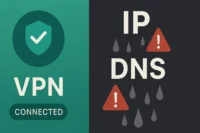Top Reasons to Choose SD WAN Migration Today
Published: 15 May 2025
SD-WAN Migration
Did you know that over 60% of businesses are already making the switch to SD-WAN? Confused about whether SD-WAN migration is the right move for your network? If you’re tired of slow internet, dropped connections, or struggling to manage multiple office networks, you’re not alone. Whether you’re just curious or seriously planning a change, this guide will walk you through SD-WAN migration in the easiest way possible.
What Is SD-WAN Migration
SD-WAN migration means moving from an old, slow network to a newer, smarter one called SD-WAN. It helps you get faster internet, better control, and smoother performance across all your office locations.

Why It’s Important
SD-WAN migration is important because it makes your network faster and more reliable. It helps your team stay connected, even in different locations.
It also saves money and improves security. With better control over your traffic, your business runs smoother every day.
Here are clear signs you might need SD-WAN:
- Your internet is slow or keeps dropping.
- You use cloud apps like Zoom or Microsoft 365.
- You have many branch offices or remote teams.
- You want better control over your network traffic.
- Your current network can’t handle new tools or updates.
- You’re spending too much on old network systems.
- You need stronger security for your data.
What to Look for in an SD-WAN Solution
When picking an SD-WAN solution, look for one that’s easy to set up and manage. A simple dashboard helps you see and control everything in one place.
Make sure it has strong security, good support, and works well with cloud apps. This way, your network stays safe, fast, and reliable.
| Steps to Plan Your SD-WAN Migration |
|---|
|
Here are the key steps to plan your SD-WAN migration:
|
After Migration | What Comes Next?
After your SD-WAN migration, start by checking how well your network is working. Look for faster speeds, fewer dropouts, and better app performance.
Ask your team for feedback and watch how the system runs. Make small updates if needed to keep everything running smoothly.
Common Migration Challenges (and How to Solve Them)
Here are some common SD-WAN migration challenges and simple ways to solve them:
Poor planning
→ Make a checklist and set a clear timeline.
No staff training
→ Give short training sessions or videos before going live.
Unexpected downtime
→ Do the migration during off-hours to avoid work disruptions.
Wrong provider choice
→ Research and pick one with good reviews and strong support.
Overlooking security needs
→ Choose a solution with built-in security features.
Lack of testing before rollout
→ Test in one location first to catch any issues early.

Conclusion About Cisco SD WAN Migration Guide
Based on my experience, I strongly recommend planning your SD WAN migration carefully to avoid downtime and ensure smooth integration. Look at your current network setup, choose a reliable SD WAN provider, and train your team before making the switch. A well-planned migration can boost performance, lower costs, and improve network control. Don’t wait—start your SD WAN migration journey today and future-proof your business network.
FAQS
The SD-WAN process connects different offices using the internet. It chooses the best path for your data to travel fast and safe.
To remove SD-WAN, disconnect it from your network and switch back to your old setup. You may also need help from your IT team or provider.
SD-WAN is needed to make networks faster, safer, and easier to manage. It saves money and works well for remote offices.
SD-WAN migration means moving from your old network to SD-WAN. It helps improve speed, control, and cost.
MPLS is a way to send data over a private network. It’s reliable but can be more costly than SD-WAN.
No, SD-WAN does not fully replace MPLS. Instead, many businesses use both together or slowly move from MPLS to SD-WAN for better flexibility.
The SD-WAN approach uses software to manage how data travels over a network. It chooses the best path for each type of traffic in real time.
SD-WAN uses many protocols like IPsec for secure tunnels and BGP or OSPF for routing. The choice depends on the vendor and setup.

- Be Respectful
- Stay Relevant
- Stay Positive
- True Feedback
- Encourage Discussion
- Avoid Spamming
- No Fake News
- Don't Copy-Paste
- No Personal Attacks



- Be Respectful
- Stay Relevant
- Stay Positive
- True Feedback
- Encourage Discussion
- Avoid Spamming
- No Fake News
- Don't Copy-Paste
- No Personal Attacks





